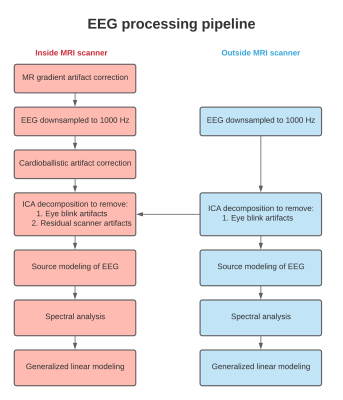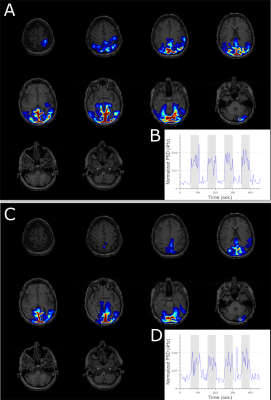Balu Krishnan1, Wanyong Shin2, Ajay Nemani2, Anna Crawford2, and Mark Lowe2
1Epilepsy Center, Cleveland Clinic Foundation, CLEVELAND, OH, United States, 2Mellen Center, Cleveland Clinic Foundation, CLEVELAND, OH, United States
1Epilepsy Center, Cleveland Clinic Foundation, CLEVELAND, OH, United States, 2Mellen Center, Cleveland Clinic Foundation, CLEVELAND, OH, United States
EEG data acquired during EEG-fMRI studies are prone to multiple artifacts. We detail an EEG artifact reduction pipeline in a block design task paradigm during a BOLD/ASL sequence. Data processed using the pipeline shows high fidelity and is comparable to data acquired outside the scanner.

Figure 1: Processing pipeline for EEG
acquired inside and outside MRI scanner for simultaneous EEG-fMRI-ASL
experiment

Figure 4: Generalized linear modeling of
the normalized power spectrum estimated from EEG while the subject is
performing a visual task showed activation in the visual cortex for EEG
recorded both (A) outside and (C) inside the scanner. The corresponding mean dynamic
spectral density function for the activated sources is shown in B and D. Grey area denotes time segments where the subject is
performing the visual task.